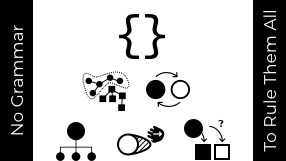No Grammar to Rule Them All: A Survey of JSON-style DSLs for Visualization
Andrew M McNutt
View presentation:2022-10-19T15:00:00ZGMT-0600Change your timezone on the schedule page
2022-10-19T15:00:00Z

Prerecorded Talk
The live footage of the talk, including the Q&A, can be viewed on the session page, Transforming Tabular Data and Grammars.
Fast forward
Abstract
There has been substantial growth in the use of JSON-based grammars, as well as other standard data serialization languages, to create visualizations. Each of these grammars serves a purpose: some focus on particular computational tasks (such as animation), some are concerned with certain chart types (such as maps), and some target specific data domains (such as ML). Despite the prominence of this interface form, there has been little detailed analysis of the characteristics of these languages. In this study, we survey and analyze the design and implementation of 57 JSON-style DSLs for visualization. We analyze these languages supported by a collected corpus of examples for each DSL (consisting of 4395 instances) across a variety of axes organized into concerns related to domain, conceptual model, language relationships, affordances, and general practicalities. We identify tensions throughout these areas, such as between formal and colloquial specifications, among types of users, and within the composition of languages. Through this work, we seek to support language implementers by elucidating the choices, opportunities, and tradeoffs in visualization DSL design.